
Renault Captur Review

Introduction
Small SUVs are one of the fastest growing areas of the automotive market, and Renault’s Captur has always been at the forefront of this. When the first version of the Captur arrived in 2013, it stole plenty of customers from its worthy-but-dull rivals by being quite the looker; all swoopy curves and stylish appeal.
This is the second-generation Captur, introduced in 2020, and it continues that same approach. The looks have been further enhanced, extra equipment included and more interior space carved out. A plug-in hybrid model has been added to the range too. We’ll cover that specific model – the Captur E-Tech – in a separate review and focus on the petrol and diesels here.
Review Sections
Select's rating score* - 3.6 / 5
At a Glance
The Captur is Renault’s smallest SUV, sharing mechanical bits with the similarly-sized Clio hatchback. That makes it a rival for a wide range of cars, including the Ford Puma, Seat Arona, Skoda Kamiq and Volkswagen T-Cross. It also means that it’s swimming in a pond with some very talented fish. The addition of a plug-in hybrid model will raise it up considerably for some potential customers, as will the snazzy looks. Renault hopes that a much-improved interior with an eye-catching infotainment system will also win it some fans, as well a choice of petrol and diesel engines and several trim levels to suit different budgets.
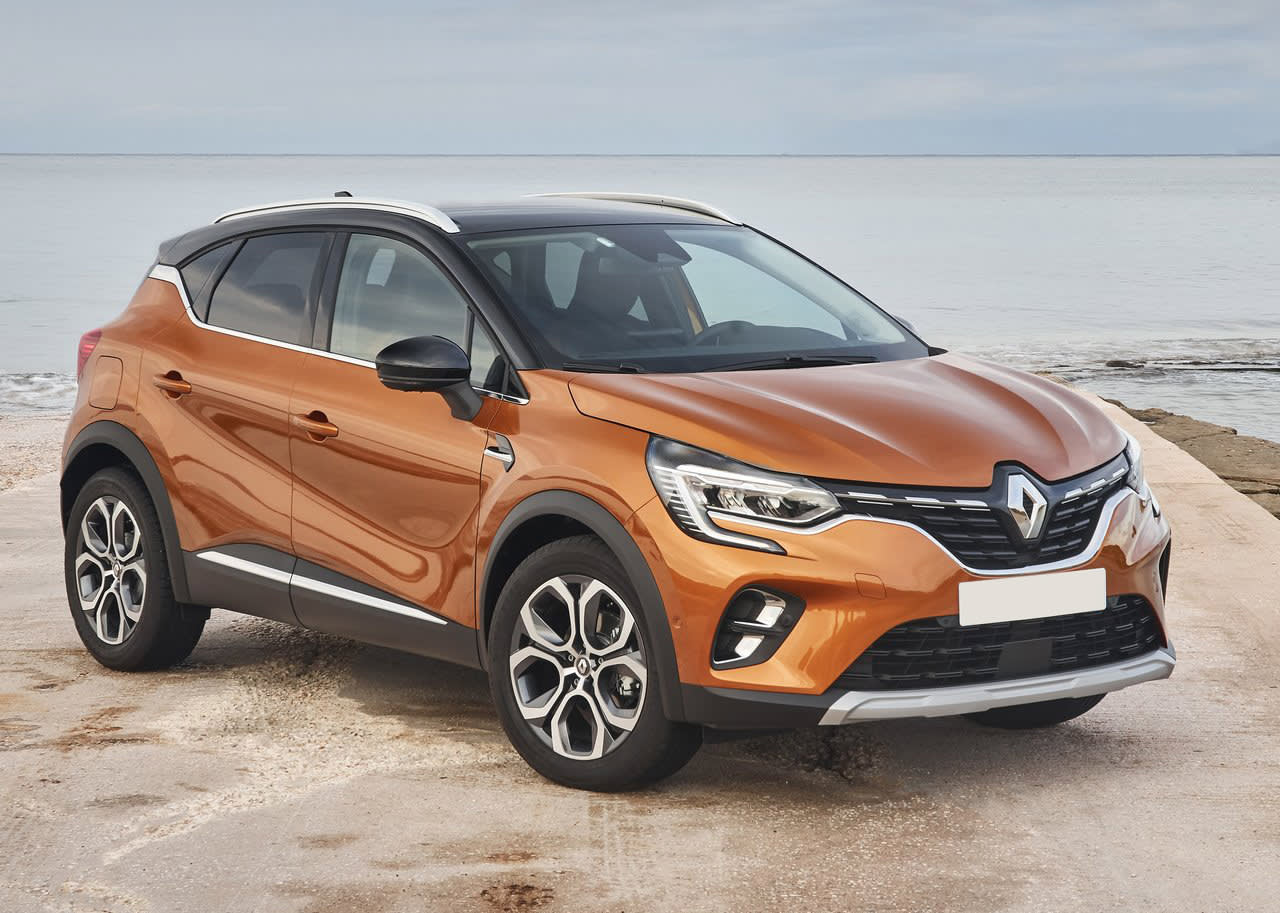
Key Features
The Captur’s primary selling points are its looks. Whether or not it’s handsome is a subjective decision, but enough people think it is that the Renault is instantly elevated above some of its humdrum opposition, even those that are actually very good. It has the familiar small SUV proportions, with hatchback dimensions but raised-up ride height, and all models have alloy wheels and bright LED headlights. As with most of its rivals, don’t be fooled by this off-road derived styling – you can’t get a Captur with four-wheel drive, and it’s very much aimed at on-road driving.
Inside, it’s similarly stylish, with some unusual features including a portrait-orientated infotainment touchscreen. There’s a sliding rear bench to let you choose between extra luggage space or more legroom, and under the bonnet you can choose one of several different powertrains, including diesel and petrol.
Performance & Drive
Renault has tried to tread a line between sportiness and comfort with the way that the Captur drives, and it’s mostly successful. Customers won’t want something so stiff and agile that it clatters its way over bad road surfaces, but neither will they appreciate a ride that’s soft and supple if it then feels all wallowy through the corners. The Captur’s ride is a little on the bumpy side, especially at lower speeds, but it’s better with smaller alloy wheels.
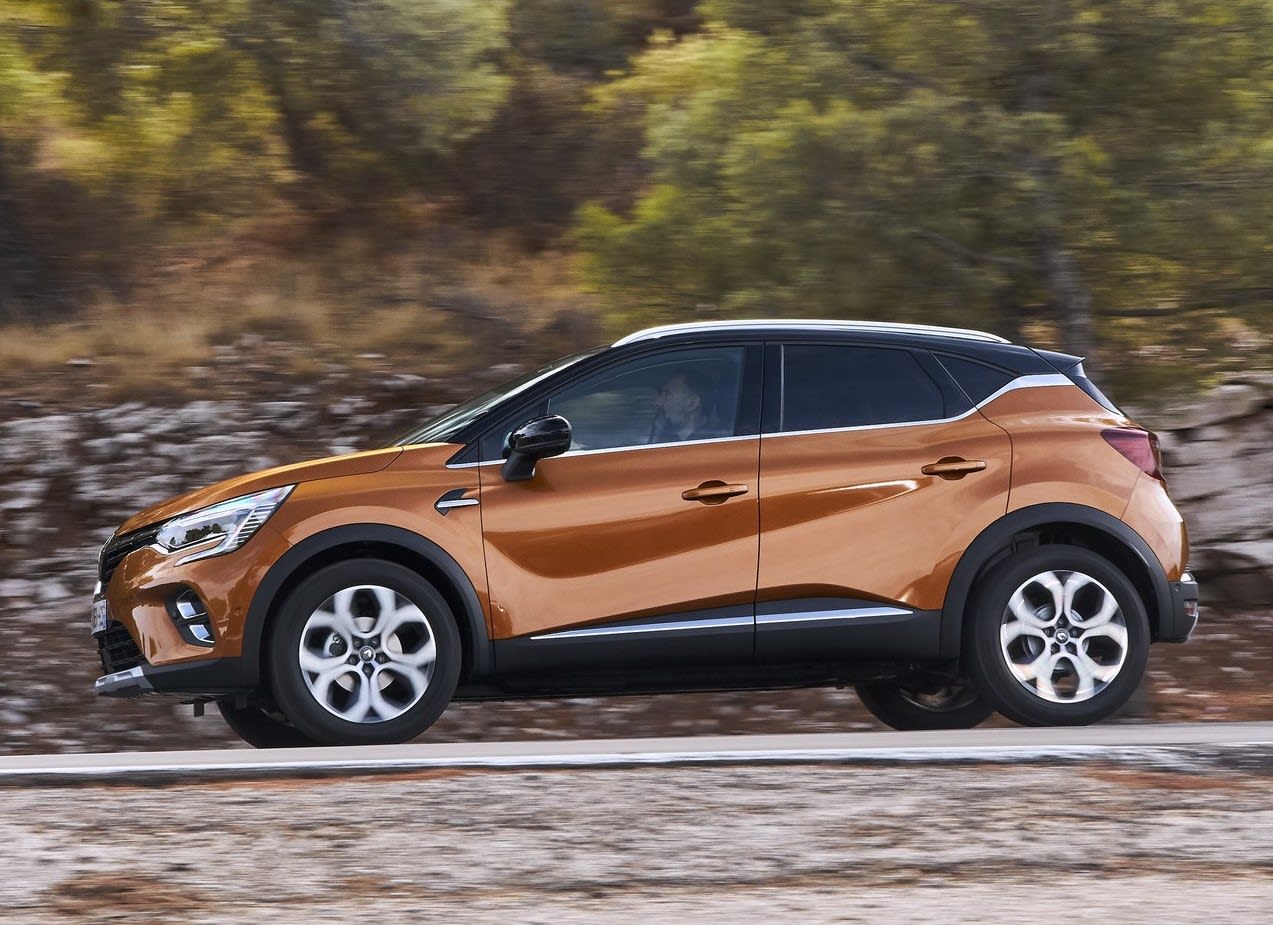
Cornering performance is similarly reasonable, with steering that’s on the light side. This doesn’t do much to make it feel agile, but it’s great for manoeuvring around town and never feels less than confident on country roads. Wind and road noise is on the high side at motorway speeds
Overall, the Captur feels a step behind the best-behaving cars of this type, namely the Skoda Kamiq, VW T-Roc and Ford Puma, but most people aren’t likely to have too many complaints.
The engine range starts with a 1.0-litre, three-cylinder petrol engine, of the type that plenty of rivals are also using. Unfortunately, Renault’s effort isn’t one of the better ones. There are two versions, the TC3 90 with 89bhp and the TCe 100 with 99bhp, but both lack the punch of similar engines, and feel rather lethargic unless you rev them hard.
The next level engine up, the TCe 130, is much better. The power figure is up to 128bhp and it’ll easily get you up to speed on the motorway, and feels lively around town. It comes with a manual gearbox, but if you want an automatic then there’s a slightly more powerful version called the TCe 14, with 138bhp. Models from mid-2021 replace the manual 130 with a manual version of the 140, but at the time of writing, both were available
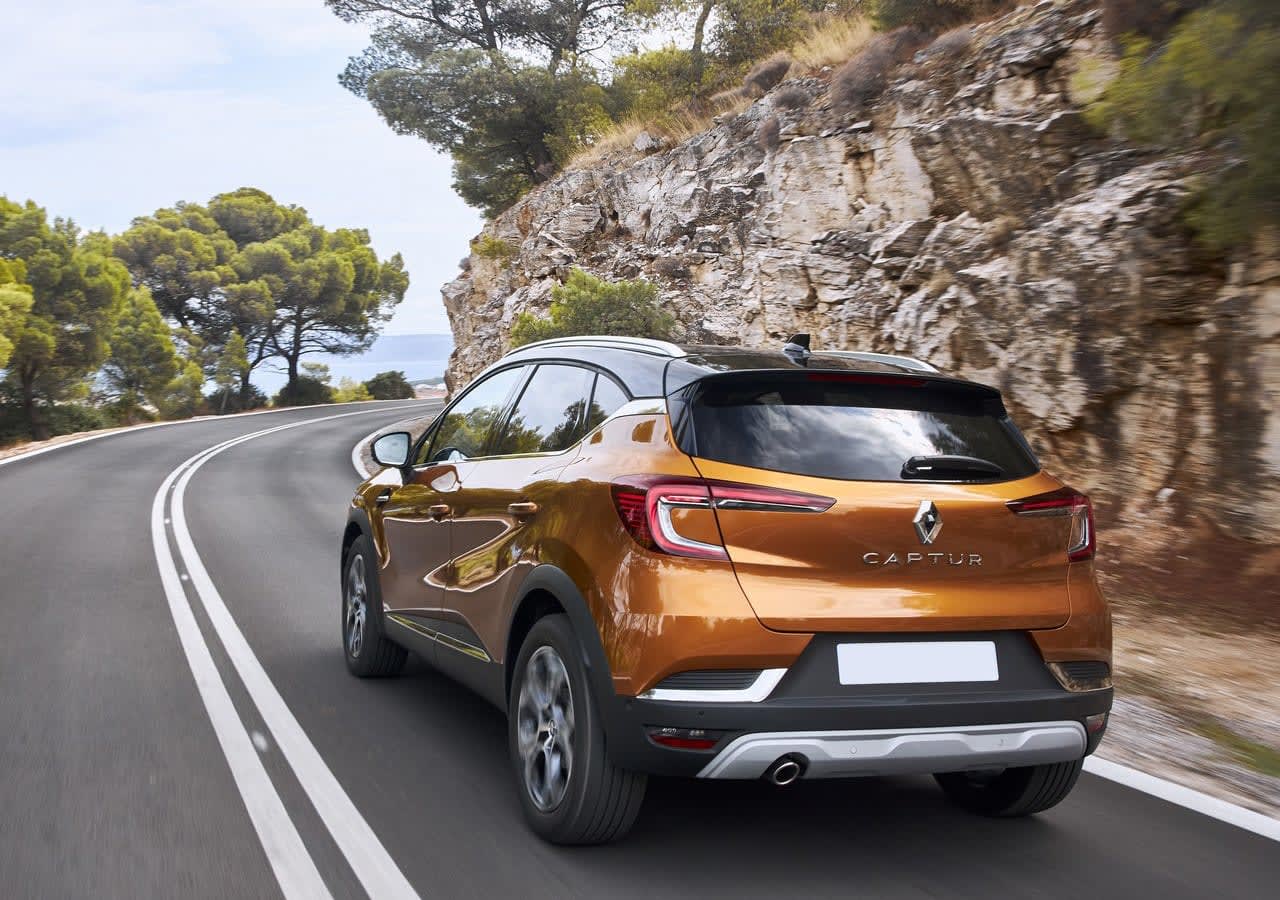
If you’re doing lots of longer journeys then the diesel-powered Blue dCi 95 engine might be up your street, although at the time of writing it was only available in one trim level. It has 94 horsepower, which isn’t a huge amount, but it’s just about enough to do the job as long as you don’t hurry it. Diesel engines tend to have more grunt low down in the rev range, and this saves it from feeling strained like the lower-powered petrols. The pay-off to a lack of urgency is much better fuel economy.
If you’re a company car driver, don’t do anything until you’ve checked out the E-Tech plug-in hybrid, as it’ll prove much cheaper on company car tax.
Running costs
When it comes to monthly leasing costs, the Captur is at the upper end of its rivals. It’s not as affordable as a lot of close competition, including the Kia Stonic, Seat Arona and Dacia Duster, but it’ll cost you considerably less than a Toyota C-HR or Mini Countryman or premium models like the BMW X1. Prices start at almost exactly the same as a VW T-Roc or a Nissan Juke.
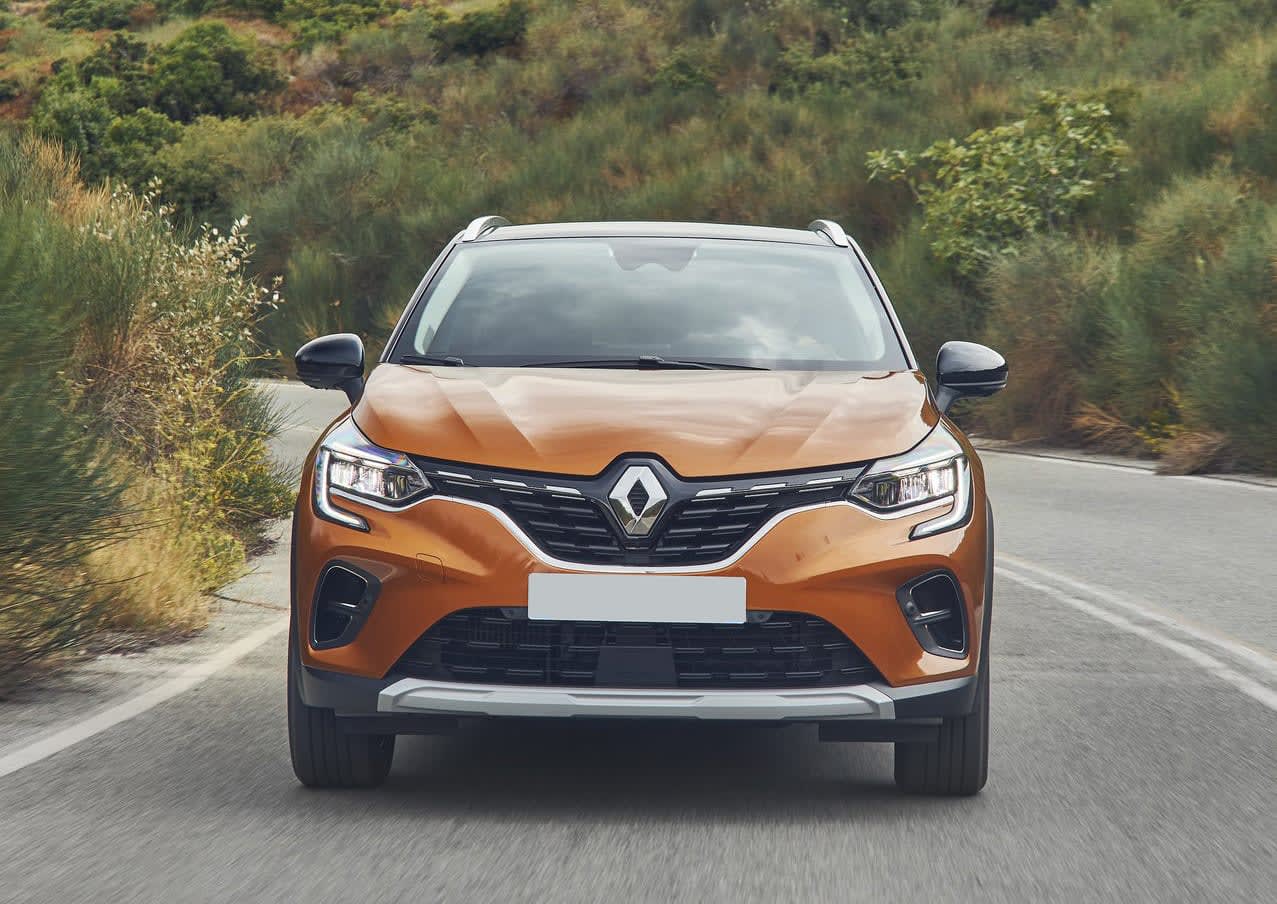
When it comes to fuel economy, the diesel will get you up to 58.9mpg on paper, compared to up to 47.9mpg for the lowest-powered petrol. Our pick of the powertrains, the TCe 130 petrol, claims up to 44.8mpg.
Insurance groups are between 7 and 15 of 50, so pretty affordable and comparable to rivals.
Emissions
The plug-in hybrid E-Tech model is the obvious choice for company car buyers, but if you’re set on a regular combustion engine model then the diesel emits slightly less than the petrols. Depending on model, the dCi 95 emits between 124g/km and 131g/km of CO2, which means benefit in kind company car tax brackets of 29% or 30% in 2021/22.
The TCe 90 emits between 133 and 135g/km, meaning 30% or 31% brackets, while the TCe 100 also sits in the 31% bracket with emission of 136 or 137gkm. The TCe 130 emits between 142 and 148g/km of CO2 (32% or 33%), but the manual TCe 140 actually reduces that down to between 131 and 133g/km (30%).
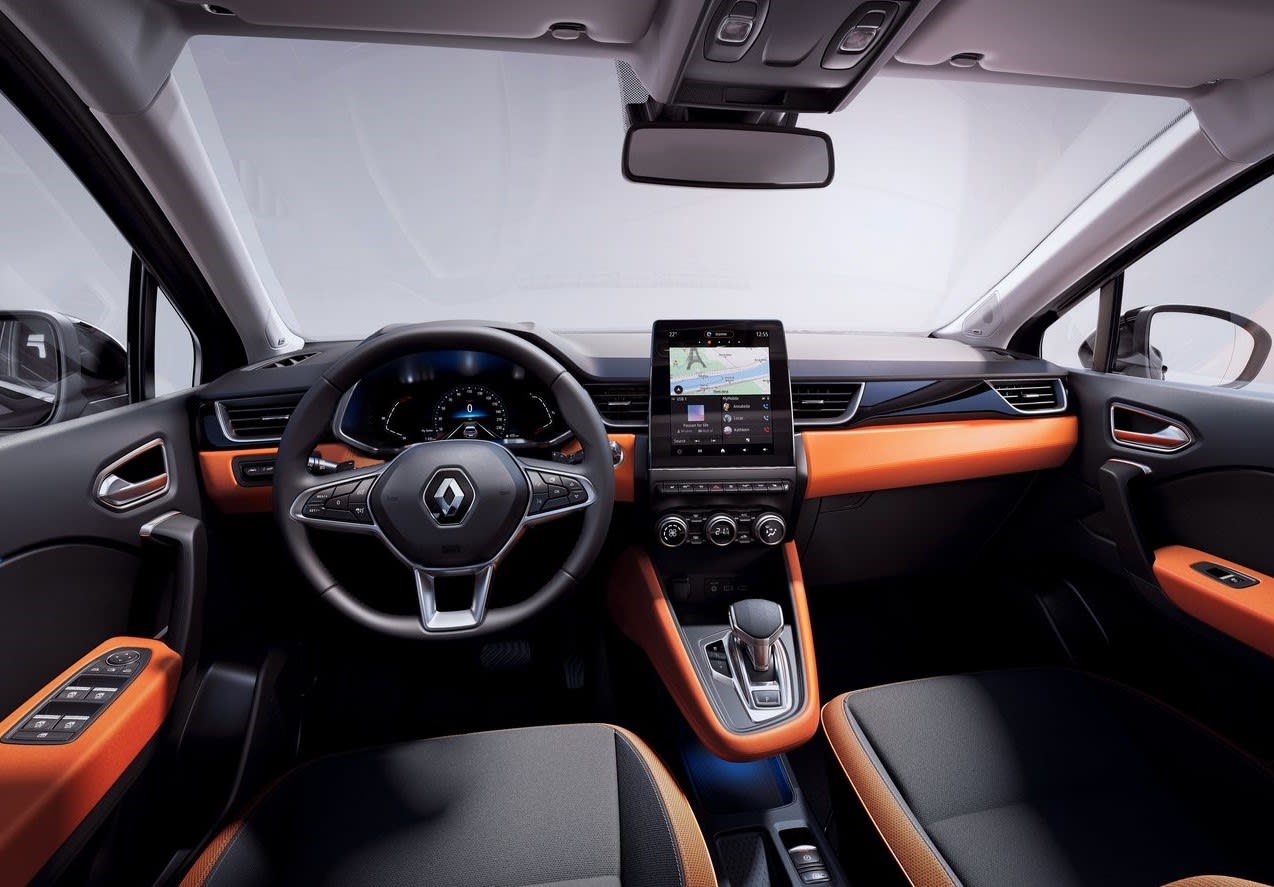
Interior
Renault has embraced the SUV philosophy inside the Captur, with a high, commanding driving position. The design is quirky, with a portrait infotainment touchscreen on higher-spec models and a raised section between the front seats, housing the gearstick and some storage trays. Build quality isn’t bad, with plenty of soft-touch materials on show, especially on higher trim levels. Some of the harder plastics don’t feel particularly premium when compared to the Skoda Kamiq or VW T-Roc. You can spec Colour Packs on your car, which can result in some very bright trim sections. It’s certainly not boring, and overall a very nice place to sit.
Technology
All models of Captur get a touchscreen infotainment system that features Apple CarPlay and Android Auto, meaning you can plug your smartphone in and use the various apps through the screen. It’s not the quickest system to use, and it can be a bit fiddly to change settings using the touchscreen while on the move, but there are far worse systems out there. DAB and Bluetooth are also included.
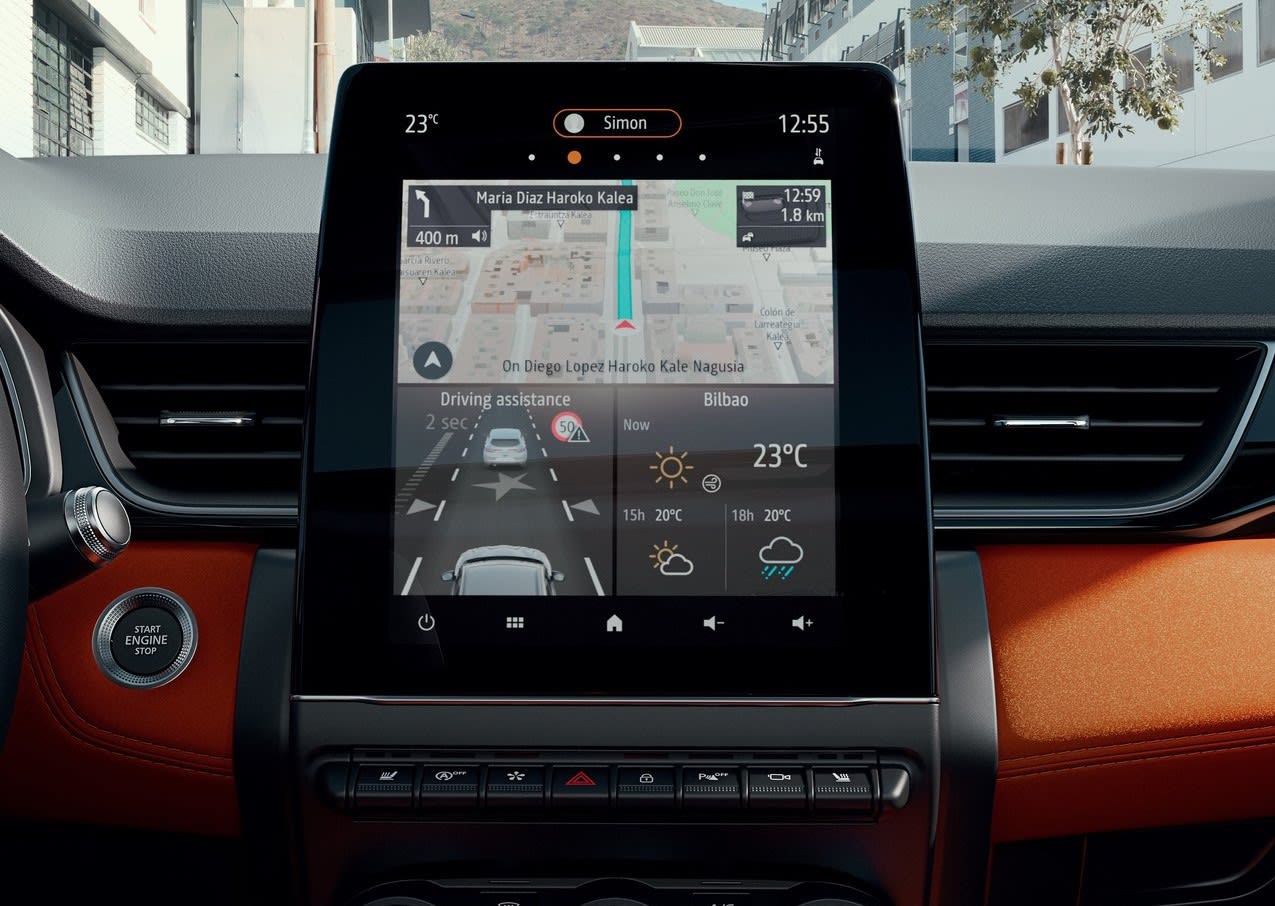
The screen measures 7.0 inches across on most cars, and 9.3 inches in portrait orientation on more expensive models. S Edition models and upwards also get a 7.0-inch driver information display in place of regular dials. This shows driving information like speed and fuel economy, and can be configured to show the information you most want on hand.
Practicality & Boot Space
The Captur isn’t a big car, but there’s a reasonable amount of space inside it if you need to carry passengers and/or luggage. Space in the back isn’t huge for adults, but those under six foot shouldn’t have too many head or leg room issues. That said, three adults will be tight. If your passengers are particularly long-limbed, you can slide the rear bench backwards for extra legroom. If you still need more space though, check out Skoda’s Kamiq.
The boot space in the Captur is excellent, as long as you leave the rear seat as far forward as it’ll go. Do that and you’ll rival larger cars for luggage room, but that space diminishes if those long-legged passengers want to stretch out. The rear seats fold down in a 60/40 split to house larger objects.
There are plenty of storage spaces around the cabin, with two storage trays between the front seats as well as a cubby hole under the armrest, as well as door pockets for odds and ends.
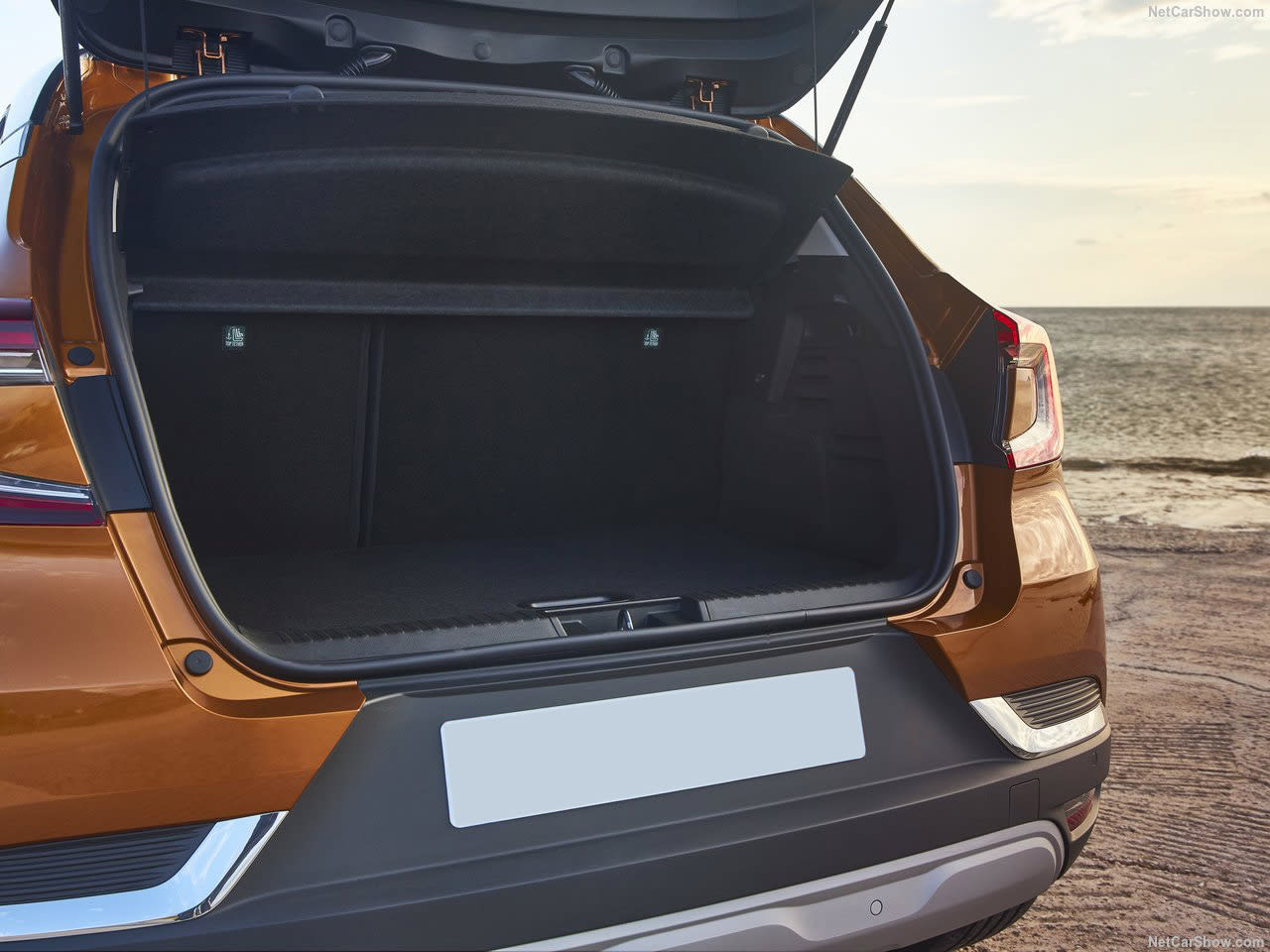
Safety
The Captur was tested by independent safety organisation Euro NCAP in 2019 and scored the maximum five stars. All models get automatic emergency braking systems as standard, and it’ll detect pedestrians and cyclists as well as other vehicles. Fail to react to an impending crash, and the system will intervene. A lane keeping assistance system is also standard. Higher-spec models include a blind spot warning system.
All models get front, side and head airbags as well as Isofix child seat mounting points on the front passenger seat and outer rear seats.
Options
The Captur range starts with the Play model, which rides on 17-inch wheels and has full LED headlights, as well as tinted rear windows. Inside, you’ll find black and grey cloth upholstery and a hands-free keycard that automatically unlocks and locks the car as you approach and depart. Automatic air-conditioning is included too.
Upgrade to the Iconic model and you’ll rear parking sensors, roof bars and two-tone paint, as well as sat-nav. The S Edition gives you fancier headlights, with signature LED daytime running lights, and automatic high beam function. There are front and rear parking sensors and a rear-view camera, and the upgraded infotainment system screen, which also comes with a wireless phone charger.
The E-Tech plug-in hybrid model also comes in E-Tech Launch Edition trim, which we’ll go into more detail about in the dedicated review.
Renault sometimes introduces special edition models to its range, which could be of interest to those looking for something a bit more exclusive. As an example, a Bose Edition was released in 2020, with a sound system from the titular manufacturer.
Options are generally few, but they include larger alloy wheels and various one-tone and two-tone paint colours
Rival Cars
The list of small SUVs on today’s market is as long as your arm, with an offering from just about every major manufacturer. If you’re looking at other small SUVs that trade on quirky looks, then you can’t ignore the Nissan Juke, Peugeot 2008 and Citroen C3 Aircross, all of which have plenty to recommend about them. Volkswagen offers the T-Roc and the slightly smaller T-Cross (the former based on the Golf, the latter on the Polo). They both feel a bit more grown up than the Renault, with punchier engines, but lack the funkiness.
The Skoda Kamiq is one of the best small SUVs on the market, with plenty of space, great attention to detail in terms of features and some great engines, and it’s good value for money too. That would be the first place we’d recommend looking if you’re starting your small SUV search, along with Ford’s latest Puma, which is also a splendid all-rounder. Kia’s Stonic and the Seat Arona are also worth checking out if you want some zing to the driving experience.
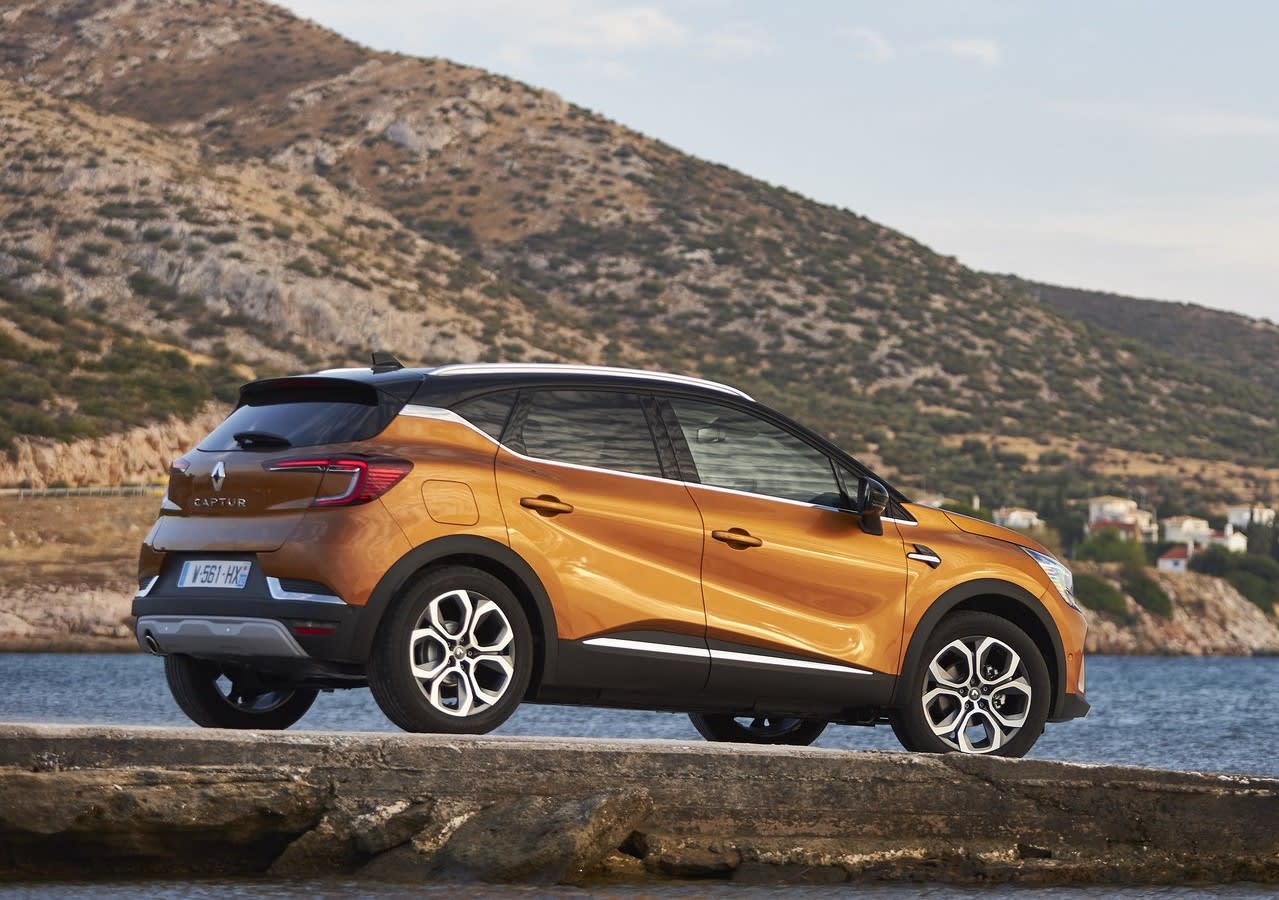
If you want something a bit more upmarket then you should look at the Mercedes-Benz GLA, Audi Q2 and BMW X1.
Verdict & Next Steps
The Captur has a very hard job on its hands, competing in a crowded small SUV marketplace full of good rivals. There’s much to recommend about it, chiefly its stylish looks and well-equipped trim levels, and the availability of a plug-in hybrid model will elevate it several steps above much of the competition. It’s not perfect, and some of the engines lack the punch that other manufacturers can offer, but it’s comfortable, drives pretty well and has a large boot. Just make sure you check out the opposition before you’re swept away by its visual charm.
Where to next?
View latest Renault Captur leasing deals- guide price from £210.11 per month inc VAT**
Looking for a great deal? Check out our incredible range of car lease deals
New small SUV? Read our latest Car Reviews and find the right model for you
Want to know more about leasing? Take a look at our comprehensive Leasing Guides
Interested in everything motoring? Why not catch up on all the latest Car Leasing News.
*Score based on Select’s unique meta score analysis, taking into account the UK’s top five leading independent car website reviews of the Renault Captur
**Correct as of 23/04/2021. Based on 9 months initial payment, 5,000 miles over a 48 month lease. Initial payment equivalent to 9 monthly payments or £1891.04 Ts and Cs apply. Credit is subject to status.
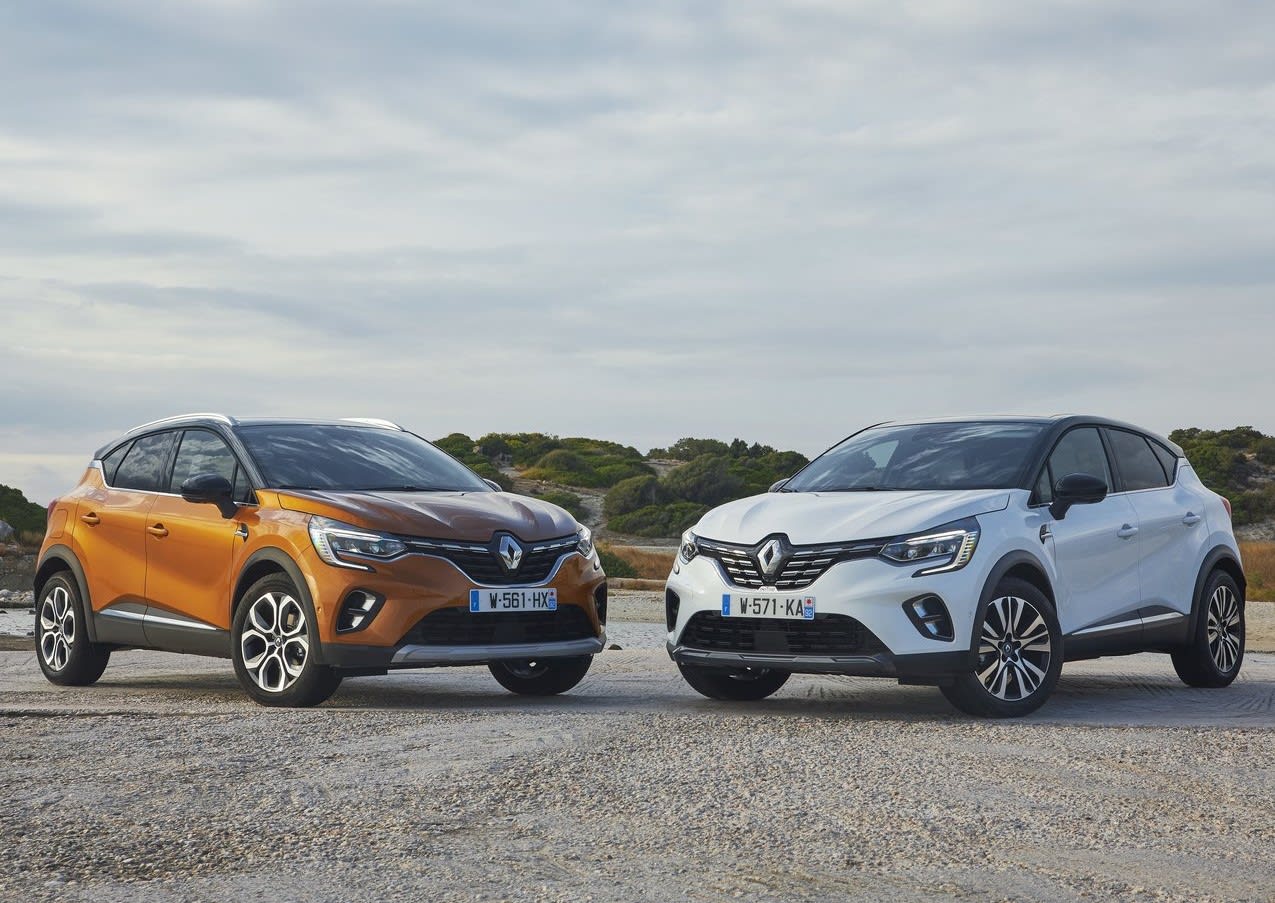
.jpg)


















